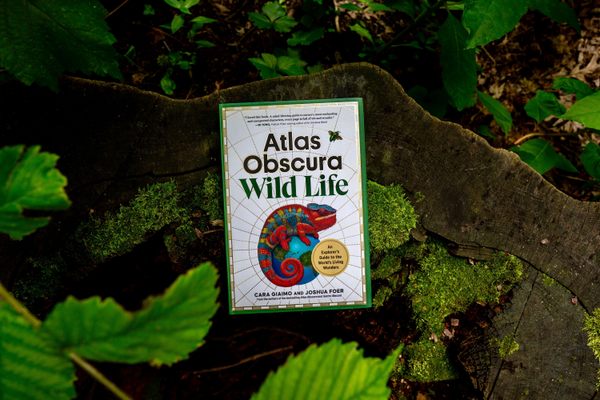How Amoeboid Architects Build Some of the Ocean’s Most Intricate Homes
Xenophyophores can craft multichambered compounds that resemble morel mushrooms.
Each week, Atlas Obscura is providing a new short excerpt from our upcoming book, Wild Life: An Explorer’s Guide to the World’s Living Wonders (September 17, 2024).
Everyone knows about the ocean’s flashier builders—the corals that sculpt reefs, the mollusks that spin up perfect pearls.
But thousands of feet down, underappreciated creatures called xenophyophores work hard to build themselves some of the most fascinating homes on the seafloor, from studio apartments to elaborate, multichambered compounds that resemble morel mushrooms or chunks of honeycomb.
Xenophyophores—xenos for short—are some of the deep sea’s most abundant organisms. Able to grow their single-celled bodies as large as a cantaloupe in some cases, they live on seabed rocks or in sediment, often in places where a current can bring by construction materials.
To shelter their huge, blobby bodies, many xenos stick bits of stuff together to form self-built abodes called “tests.” Lacking more solid appendages, xenos use extended threads of protoplasm to collect sediment or other drifting particles and glue them together grain by grain. A few “naked” xenos do things differently, secreting a transparent casing and building tests from their own fecal pellets. “They’re incredible bricklayers,” says Lisa Levin, one of a handful of deep-sea ecologists who has studied them in their natural habitat.
Xenos make good neighbors. Like trees or reefs, they are diversity hot spots, providing other creatures places to perch, feed, and hide. They’re also sediment stabilizers and particle traps on the seafloor. Some researchers have even proposed that xenos may be master gardeners, growing and harvesting microbes down on their sunless, submarine farms.
In some regions, these exceptional community members are now considered indicator taxa for vulnerable marine ecosystems—an honor usually reserved for corals or sponges. If observed or harvested as bycatch, these indicators tell observers that where they are is fragile, special, and worthy of protection.
As the xenos gain fame, conservation groups are taking note of their stomping grounds around the world. Just west of Costa Rica’s fishery-threatened seamounts, for example, the Clarion-Clipperton Zone has been targeted for deep-sea mining. But it’s also a xeno hot spot, researchers have found—and perhaps it’s time to protect, rather than knock down, the Dali-esque test of the giant amoeboid architect in the neighborhood.
How to see them: Unless you’re lucky enough to snag a spot on a deep-sea research cruise, your best bet is to seek them out in videos. If you see a structure sticking out on the seafloor, there’s a good chance it’s a xeno.
Range: Common near continental margins and seamounts in the deep sea, below 1,300 feet (396 m). They’re even found in the Mariana Trench, which dips some 7 miles (11 km) below the surface.
Species: While xenophyophores are poorly studied and their taxonomy is not well agreed upon, there are dozens of known species—counts range from around 40 to more than 80.
Wild Life: An Explorer’s Guide to the World’s Living Wonders celebrates hundreds of surprising animals, plants, fungi, microbes, and more, as well as the people around the world who have dedicated their lives to understanding them. Pre-order your copy today!























Follow us on Twitter to get the latest on the world's hidden wonders.
Like us on Facebook to get the latest on the world's hidden wonders.
Follow us on Twitter Like us on Facebook